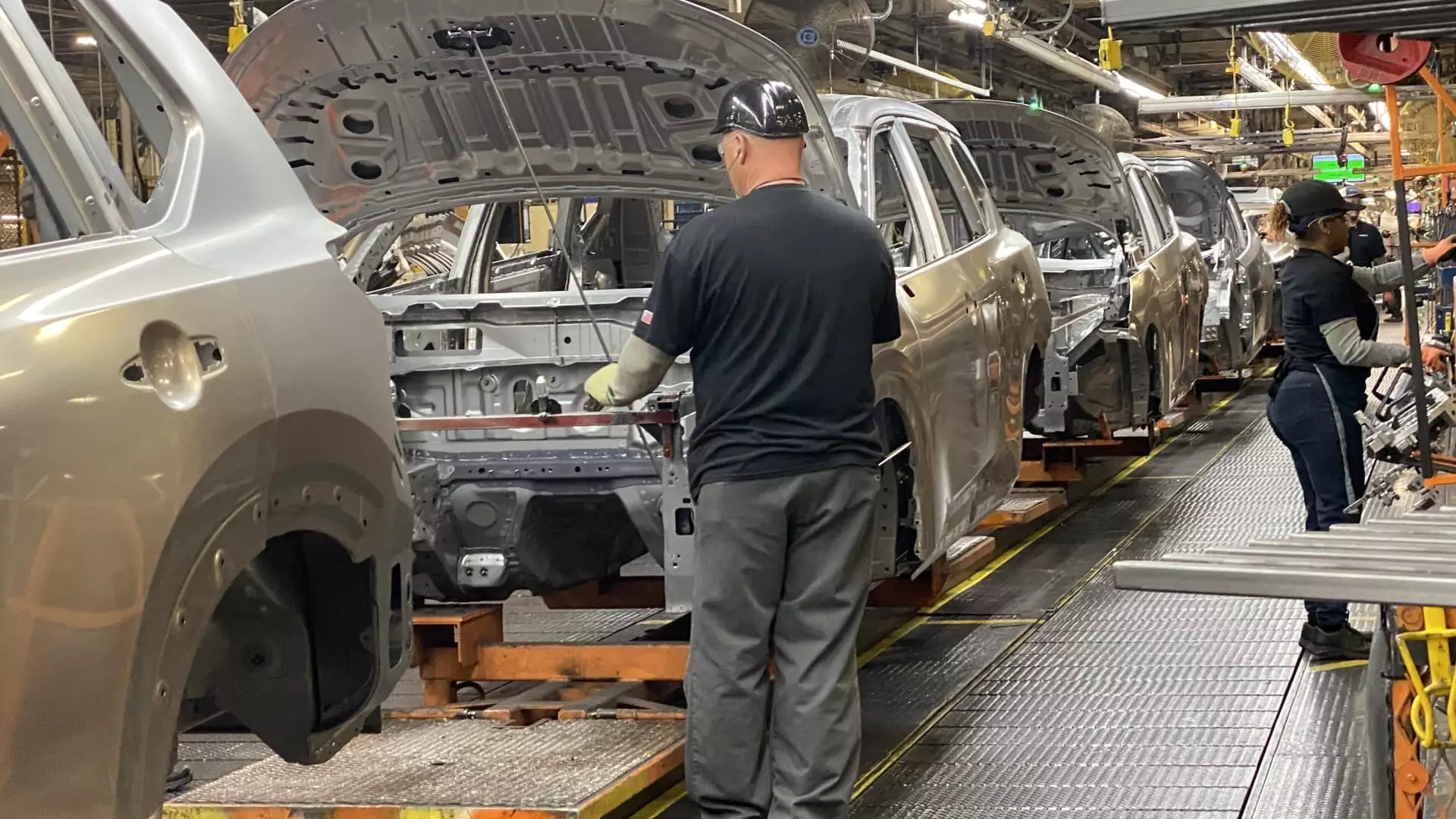The automotive industry in the United States is rapidly approaching a precipice, primarily due to the controversial tariffs imposed by former President Donald Trump. These tariffs, staggering at 25% on imported vehicles and soon to extend to automotive parts, are not just mere percentages; they symbolize a looming crisis that threatens to reshape the auto market forever. Analysts project that these policies could lead to a staggering $100 billion increase in costs for the auto industry, hinting at broader economic implications that go far beyond buying a car.
Felix Stellmaszek, head of automotive and mobility at Boston Consulting Group, articulately points out that this year may be the catalyst for significant and lasting changes within the industry. The idea that we are on the verge of a structural transformation, forced by policy rather than innovation, is both alarming and revealing about the vulnerabilities within U.S. economic structures.
The Domino Effect of Rising Costs
Recent studies from groups like the Center for Automotive Research indicate a bleak forecast: costs for American automakers alone could surge by $107.7 billion, impacting the market dynamics for giants like General Motors, Ford, and Stellantis. The consequences will trickle down, impacting consumers who might soon find themselves paying thousands more for basic vehicles. This situation perfectly encapsulates the ripple effect that tariffs have. Initially, it seems like a hit to manufacturers, but ultimately, the consumer feels the brunt of these poorly conceived policies.
Despite high hopes for resilience, many analysts fear the auto industry will struggle to shoulder the rising costs without passing them onto the consumer. The prospect of vehicle prices increasing by as much as $4,000 is not only startling but likely to lead to a dramatic drop in sales. Selling fewer cars in an already weakened market is a recipe for disaster—a horrible outcome that threatens not just individual companies but the economic health of U.S. manufacturing as a whole.
Challenges for Consumers Amidst Confusion
What does this mean for the average American hoping to buy a new vehicle? It spells trouble. The cost of the average new car has already skyrocketed to what’s become an eye-watering $50,000 without even factoring in financing costs, which are also on the rise. Auto loan rates have surged, hovering around near-10% for new cars and nearly 15% for used ones. Such harsh realities make purchasing a vehicle seem increasingly unattainable for many.
A staggering revelation comes from an automotive insights expert, Sam Abuelsamid, who notes that a potential loss of 2 million vehicles sold annually could unleash chaos in the U.S. and Canadian automotive markets. This isn’t merely an academic figure; it represents real families grappling with the harsh reality of transportation costs amidst fluctuating economic conditions. In a world where wages are not keeping pace with inflation, how can we expect working people to absorb yet another financial burden?
The Long-Term Impact on Innovation and Choices
The repercussions of these tariffs extend beyond immediate economic concerns; they threaten innovation and vehicle diversity in the market. We run the risk of stifling competition and curtailing the variety of vehicles available to consumers. In a landscape where manufacturers might eliminate certain models in response to increased production costs, will consumers find the high-tech, diverse options they desire? The outlook is grim if automakers focus solely on economies of scale to cope with these financial pressures.
Furthermore, it raises unsettling questions about the durability of U.S. economic policies and the ability of industry to innovate amid rigid constraints. Will American manufacturers use this as a catalyst for deeper structural change or merely become complacent, relying on domestic consumer loyalty as a cushion?
Merely a Hurdle or a Point of No Return?
It remains to be seen whether these tariffs will serve as a mere hurdle or a point of no return for the automotive sector. Companies are currently adopting varied strategies to cope, from temporary employee pricing discounts to halting shipments altogether, as seen with Jaguar Land Rover. These reactive measures paint a picture of an industry scrambling to navigate a complicated and precarious environment.
As we venture into uncertain territory where consumers face heightened prices and diminished choices, one can’t help but question whether the current administration will face accountability for the overwhelming consequences that come from impulsive policy decisions impacting an industry of such vital importance to the economy.
In a sense, these tariffs are not just about the price of a car; they encapsulate a larger debate about what we value as a society—innovation versus protectionism, consumer rights versus governmental overreach. The auto industry is at a crossroads, and the impact will resonate for generations. Policymaking should lead to growth and opportunity, not stifling economic pressures that lead to a bleak automotive future.


Leave a Reply